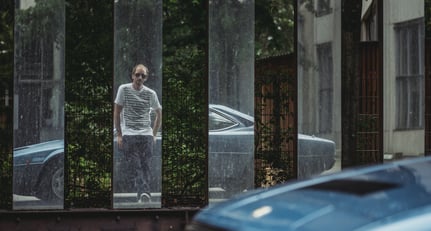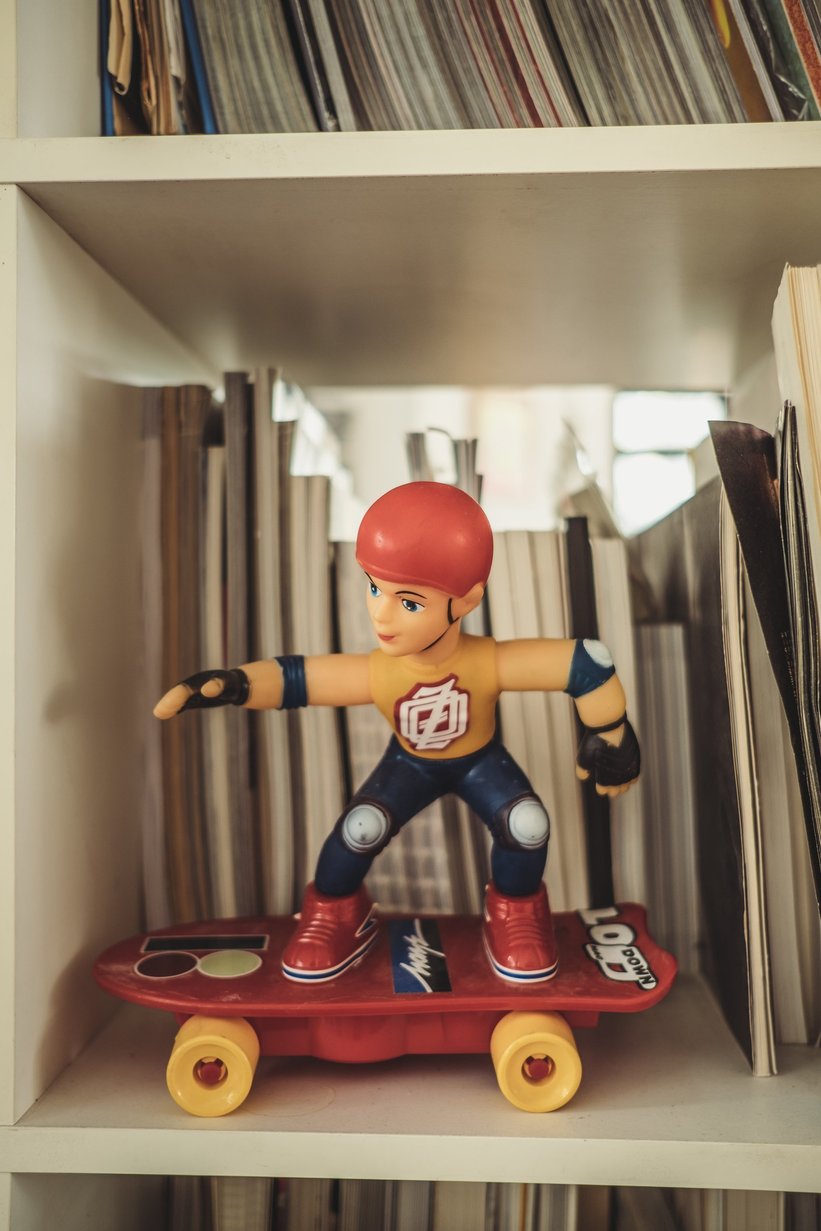
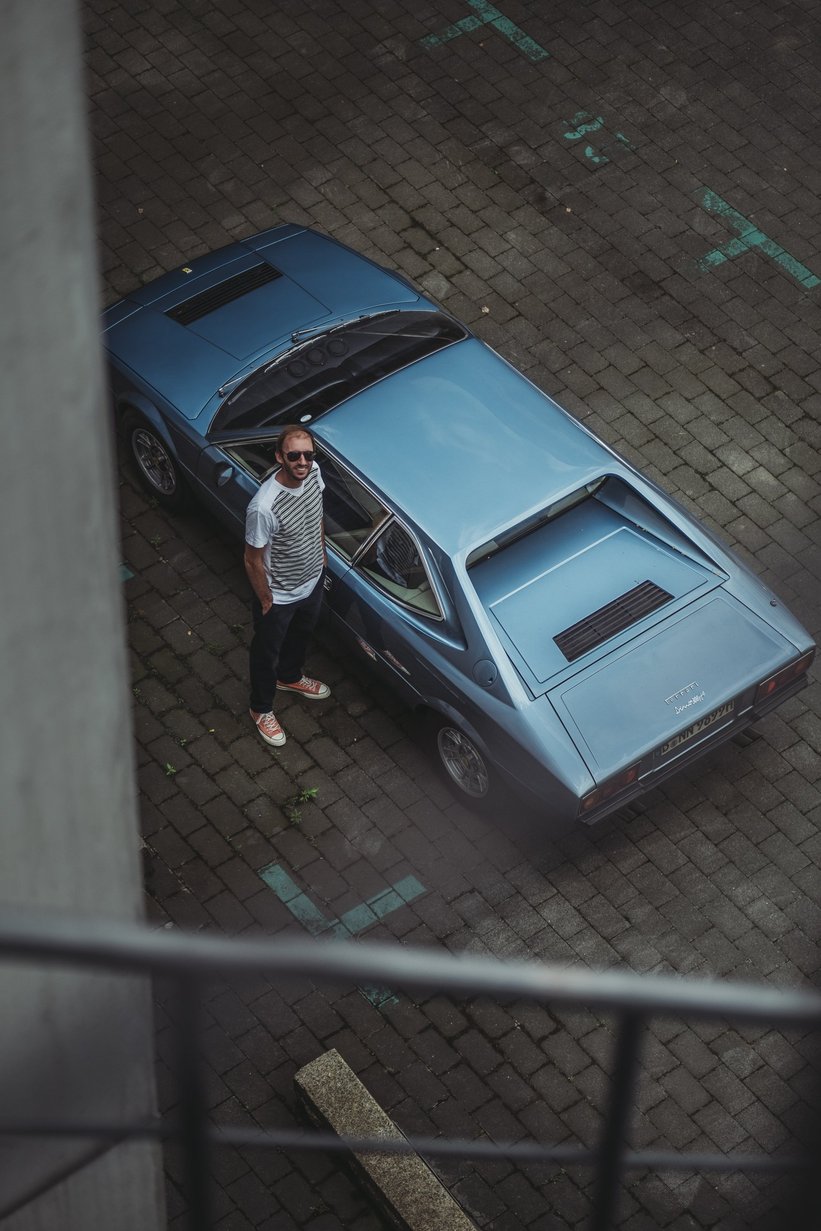
The headquarters for Lodown is located in one of Berlin’s trademark lofts. As I approach on foot, I’m passed by a group of long-haired teenagers surfing down the street on their skateboards, small beanies on their heads, XXL vintage t-shirts around their torsos and Vans on their feet. As they roll past noisily and disappear around the corner, I think to myself that it’s a promising omen – a sign of fashion and culture once again coming full circle after roughly 20–25 years.
It’s the perfect time to revisit that part of the past, when I was a rebellious teenager. Especially as it was a time when skateboarding, surfing, street art and rap music were, for the first time in European history, at the forefront of what was considered ‘cool’ – and magazines such as Lodown were regarded at least by that generation as bibles.
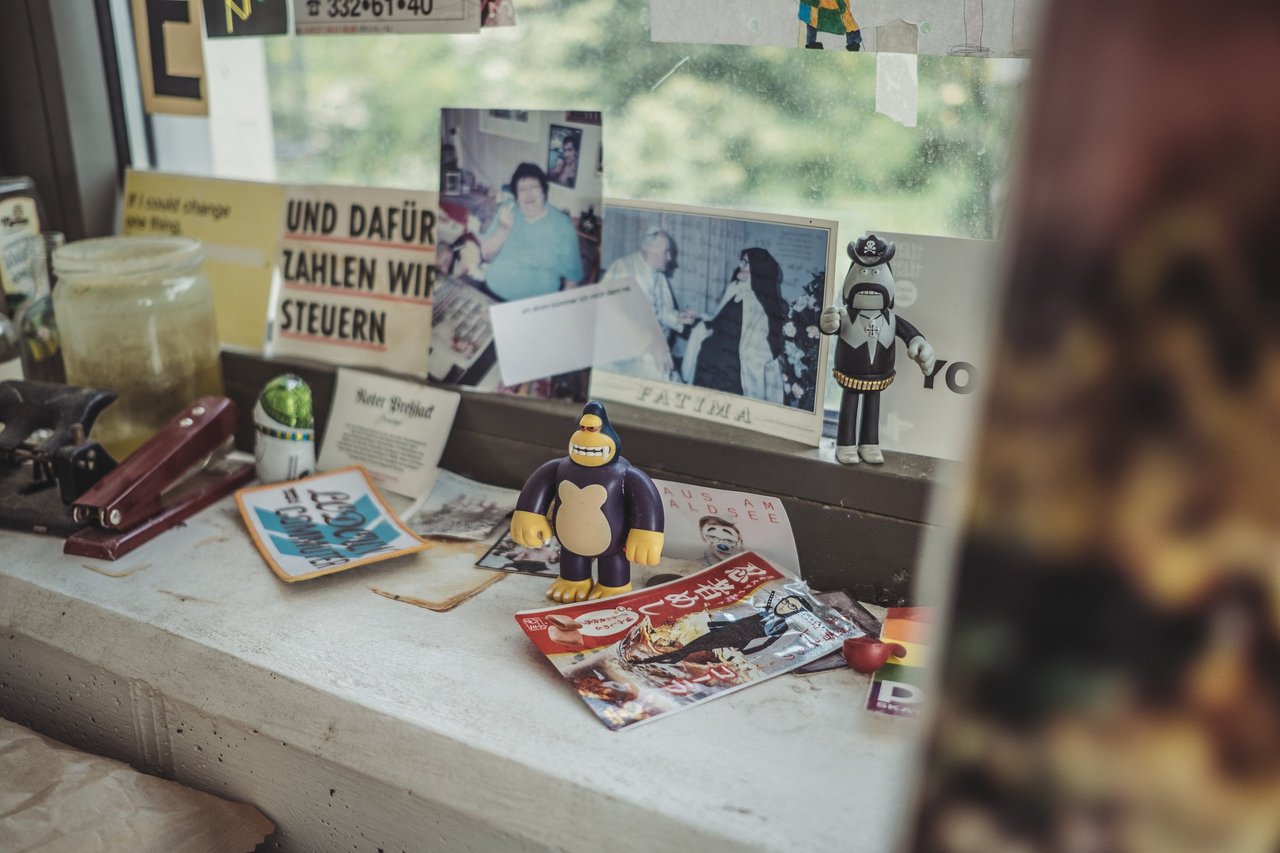
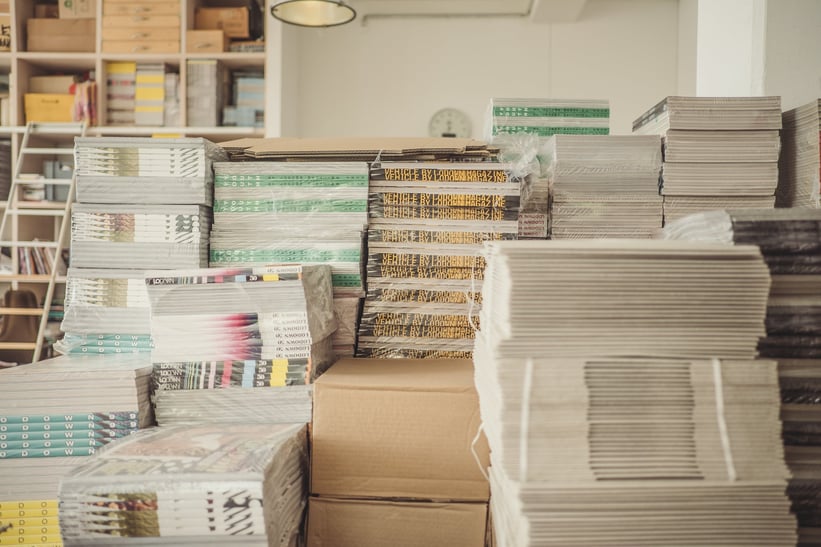
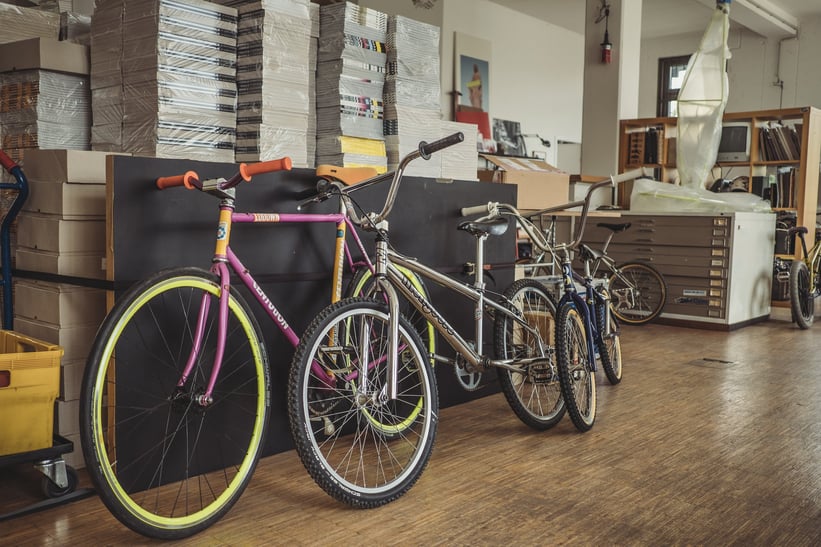
Immediately, I’m struck by the eclectic, creative mess inside Lodown, testament to the boundless creativity and passion of ‘Marok’, Thomas Marecki’s artistic pseudonym. There are piles of special edition magazines published by the company over the years including a wonderfully artistic car magazine called Vehikel, the obligatory skateboards, many of which are still new in their foil packaging, and BMX bikes, which Marecki builds for his friends.
Oh, and art. Lots of it, from posters and paintings to serigraphs and screen prints. I’m particularly taken by a huge painting of a Formula 1 crash, which reminds me that my host is also an avid petrolhead.

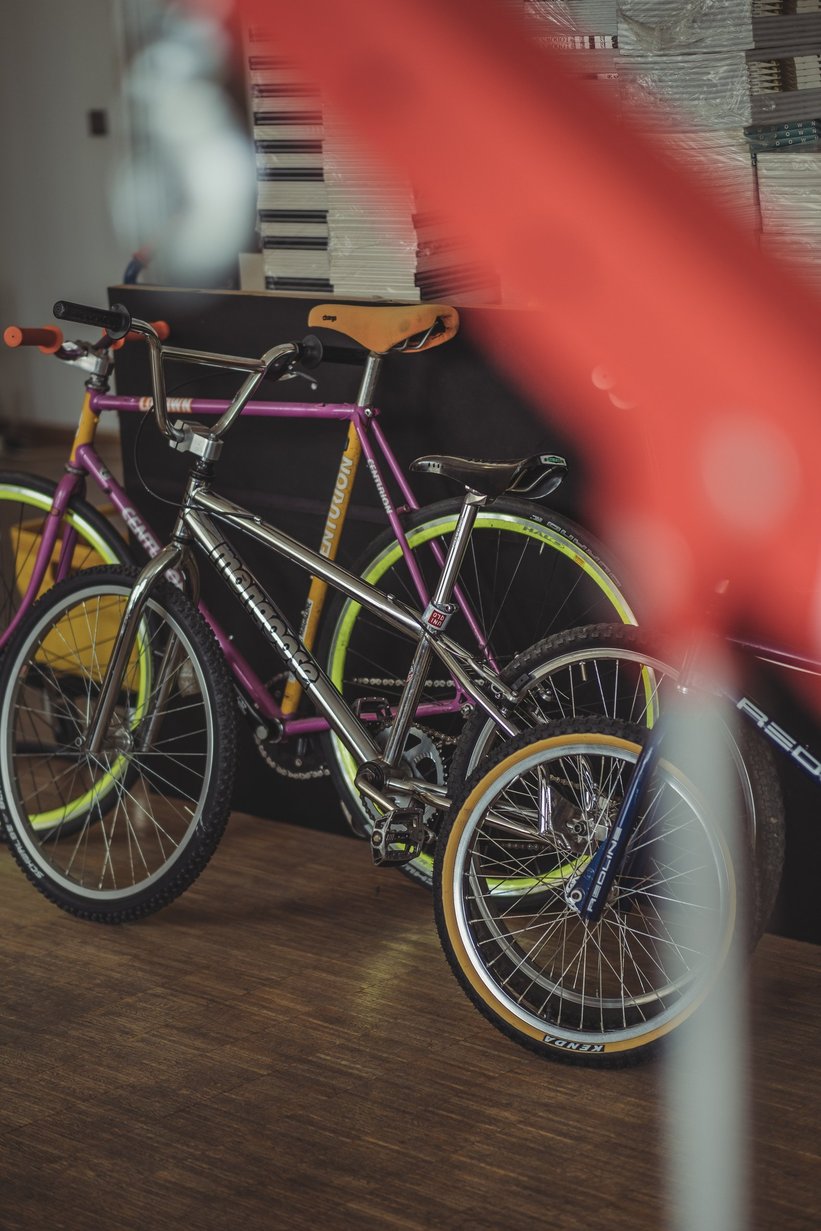
While Marecki makes me a coffee, I roam around the office and discover all the details – some obvious, others less so – that make this space so unique. There are old games consoles, bottles of Ukrainian vodka, collectable Japanese toys, a postcard of the Pope’s visit to Fatima, headshots of famous rappers, shoes and unique design pieces such as the hoverboard ceiling fan, which on hot days compensates for the lack of air-conditioning.
I’m truly overwhelmed. I’m quickly reminded of all the Polish magazines which came out in the late 1990s and were modelled after Lodown, such as Dosdedos, Ślizg and Fluid. Then I see a sticker proclaiming, ‘Wankers Suck Our Style’. I immediately feel like an idiot.


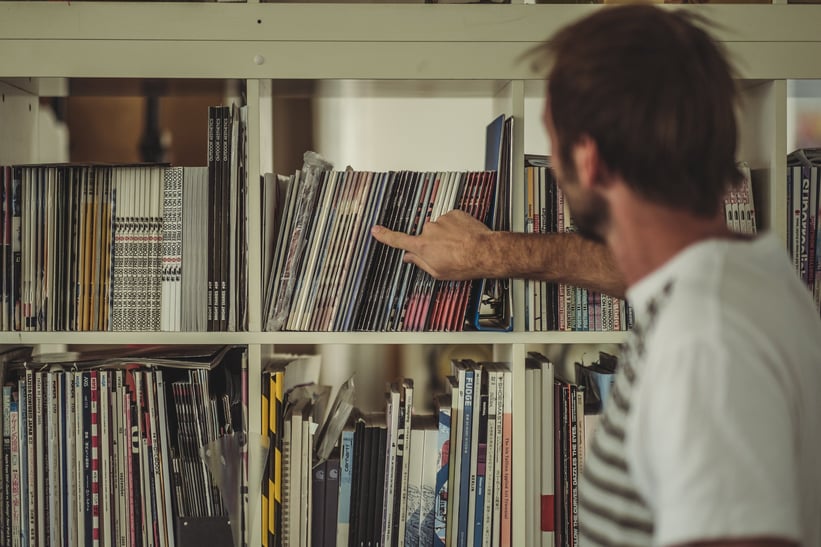
Marecki is a man of few words. He prefers to show me his designs than talk about them in detail. For a good half hour, he opens countless drawers in search of different special editions, books and posters. He’s a proud father of his creations. We also manage to find a framed copy of the very first issue of Lodown, dating to exactly 25 years ago and atypically published in landscape format.
Nowadays, Lodown is a quarterly, with different special editions such as Paradise by Lo(ck)down Magazine irregularly thrown into the mix. Funnily enough, it hasn’t really transitioned into the realm of online publishing, for which Marecki doesn’t seem to care too much. He prefers atomic and condensed matter, which is probably why he likes classic cars so much.
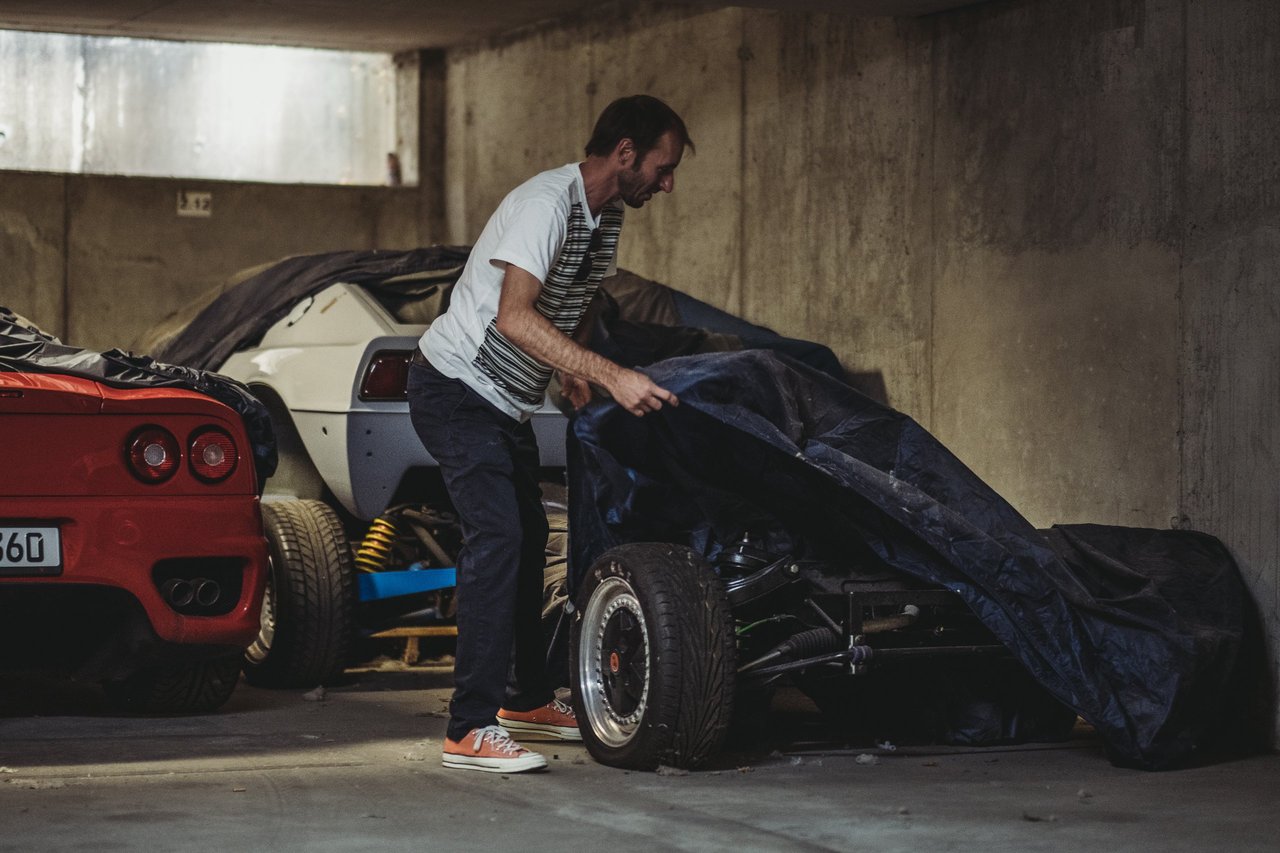
When I first met him last year during the first outing of the Flitzer Club, Marecki turned up in a Porsche 930 Turbo and drove it hard throughout the day, despite the wet weather, in which this particular car is known to be notoriously difficult. This bravery and skill made a lasting impression on me and once I’ve finished my coffee, I ask him if we can move to the garage. We’ve only got a morning to shoot and time is running out. Art is interesting and all that, but it’s time to burn some fossil fuels.
We head downstairs. The Porsche isn’t here – Marecki shares it with his father, who’s taken it for the weekend – but beneath a cover in the corner of the dusty space there’s his stunning 'Rosso Corsa' Ferrari 360 Modena with the appropriate license plate ‘BMX 360’. Next to it there’s a Lotus Esprit, which, like one of the BMX’s upstairs, Marecki is converting to electric power.
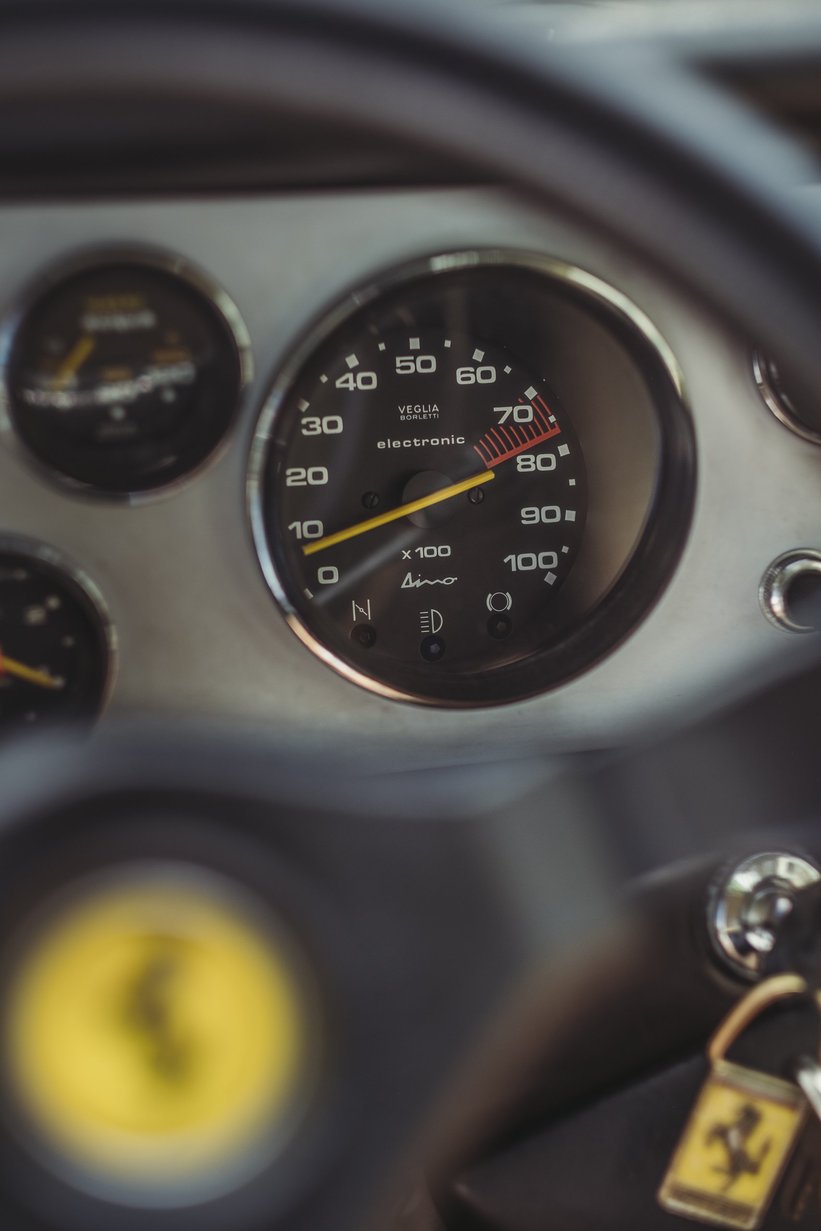
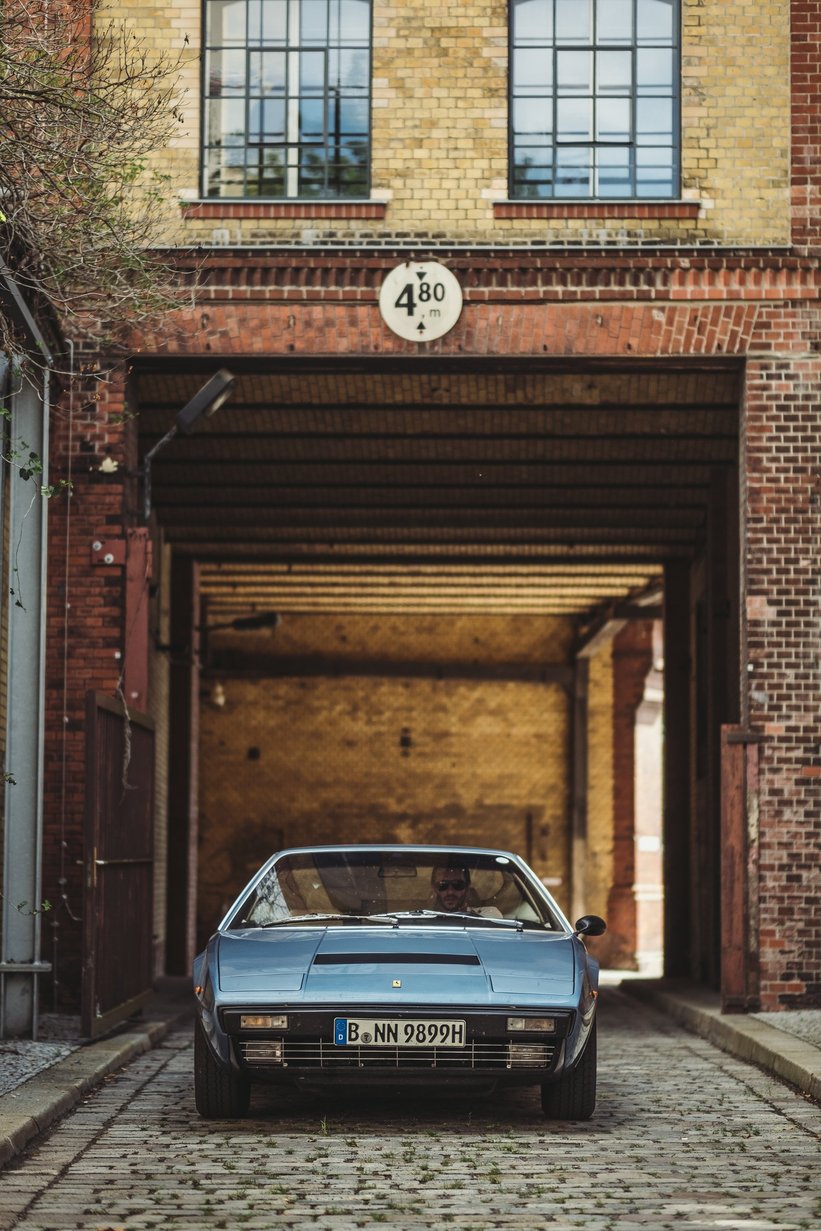
“I still need to marry the chassis to the body,” he says, before apologising about the state of the car we’re due to take out, his Ferrari Dino 308 GT4 resplendent in Azzurro California. “I haven’t had time to wash it.” The car is indeed not very clean, but how can I say anything to this disarming and absent-minded artist who’s currently struggling to put a tarpaulin back over a Lotus? Fortunately, the Ferrari is mechanically sorted and starts immediately, its 2.9-litre V8 making a pleasant growl.
Our goal is to check out the places where Marecki and his Lodown friends and colleagues used to frequent 25 years ago, when the idea of the magazine kindled. We briefly shoot around the office courtyard before continuing on our way. I’m eager to tap into the 1995 energy – the Berlin Wall had fallen, the East was opening itself to all the new influences and young people were searching for new ways of expressing themselves. New fashions, activities and views of urban spaces quickly emerged.
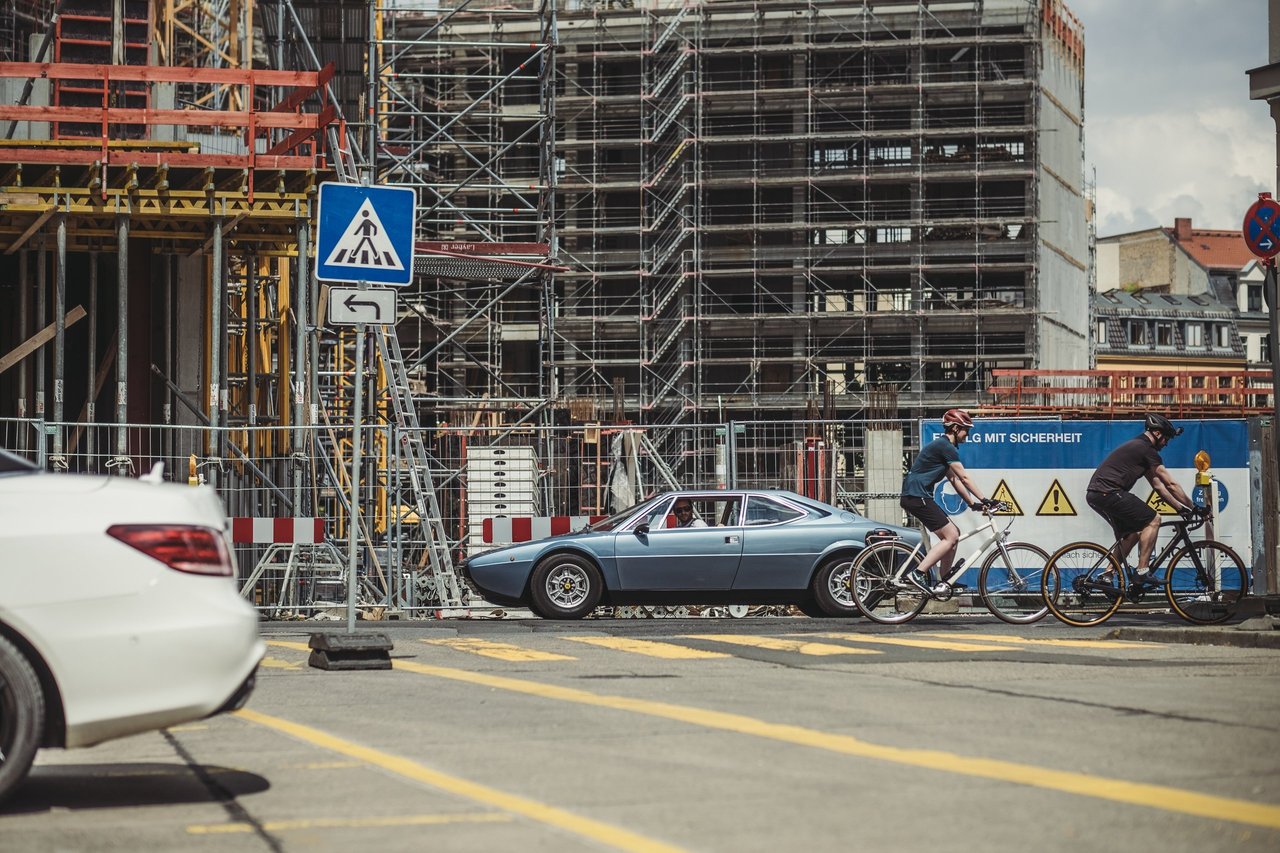
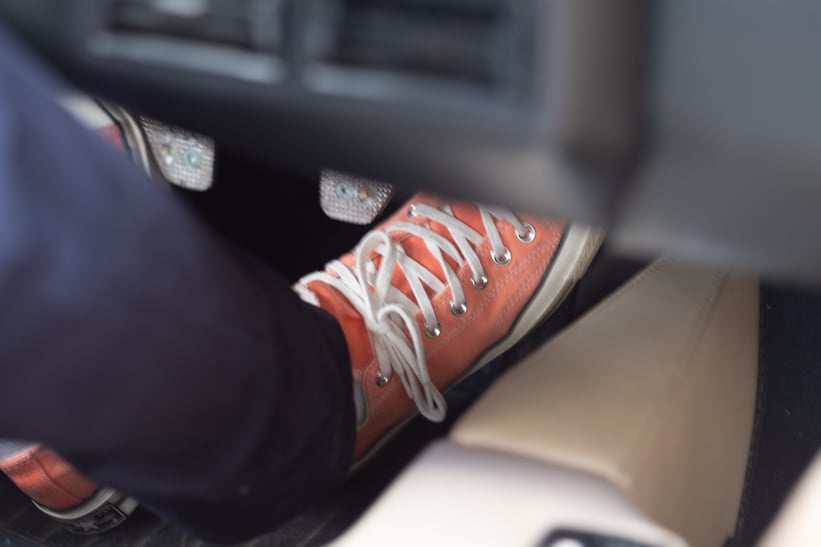
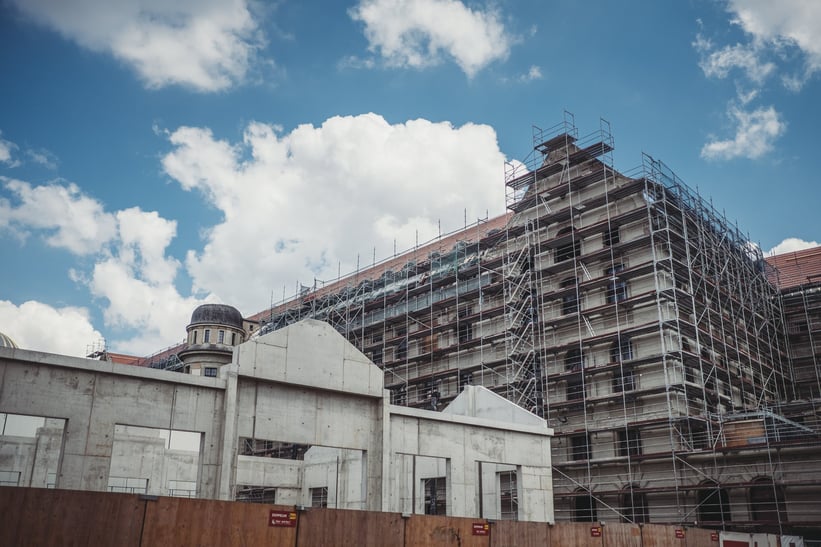
Unfortunately, I learn that we won’t be able to make our first stop at Lodown’s first office. The building used to be located in the newly rediscovered centre of West Berlin, near Kurfürstendamm, and it’s simply too far away to drive in today’s heavy traffic. There’s other bad news, too. The gentrification of Mitte and its popularity with tourists means that all of the original clubs and bars no longer exist.
We continue and I discover that one of the cult 1990s locations, the WMF Loungebar on Ziegelstrasse, is now a big hole in the ground where an office building will soon be constructed (Marecki later sends me a photo of DJ Highfish – aka Marcin Kozłowski, aka Marcin Öz, the bassist in The Whitest Boy Alive – spinning there back in the day). The famous WMF Club on Johannisstrasse 20 has suffered the same fate. It’s now a building site.
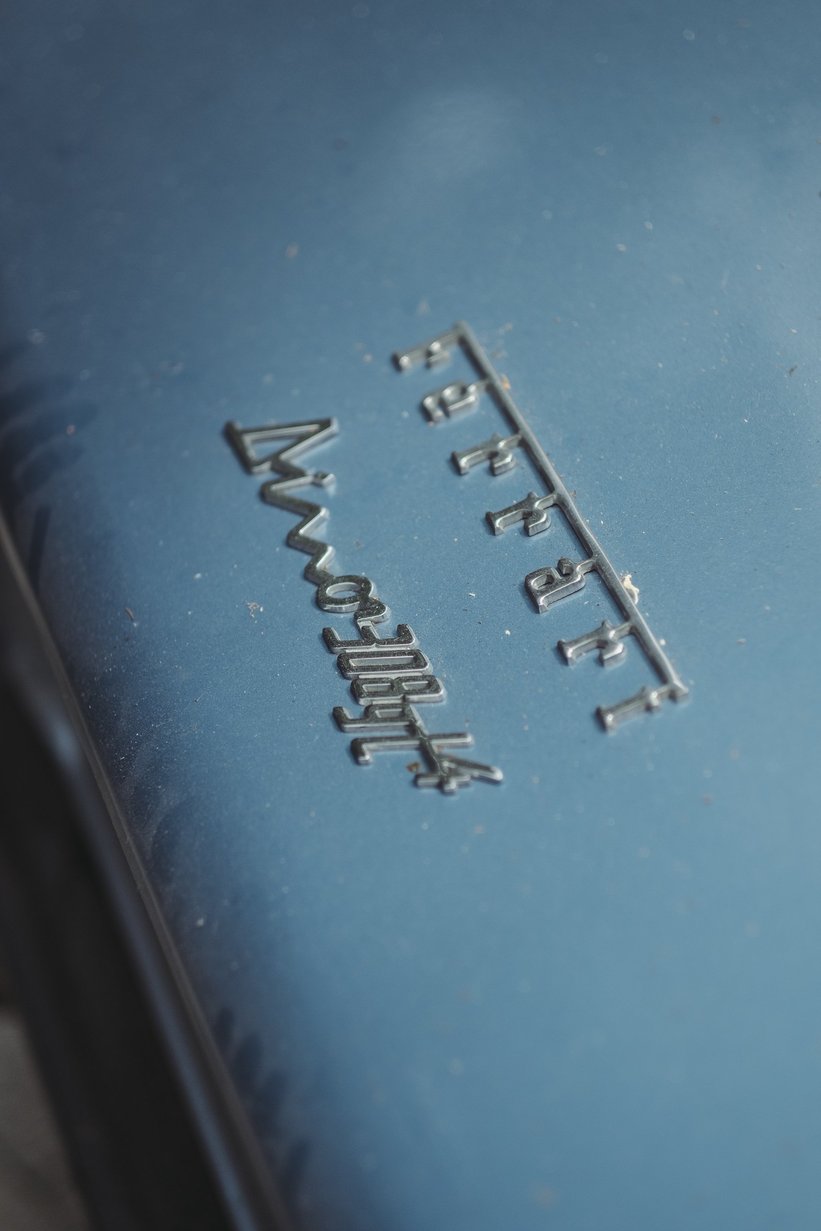
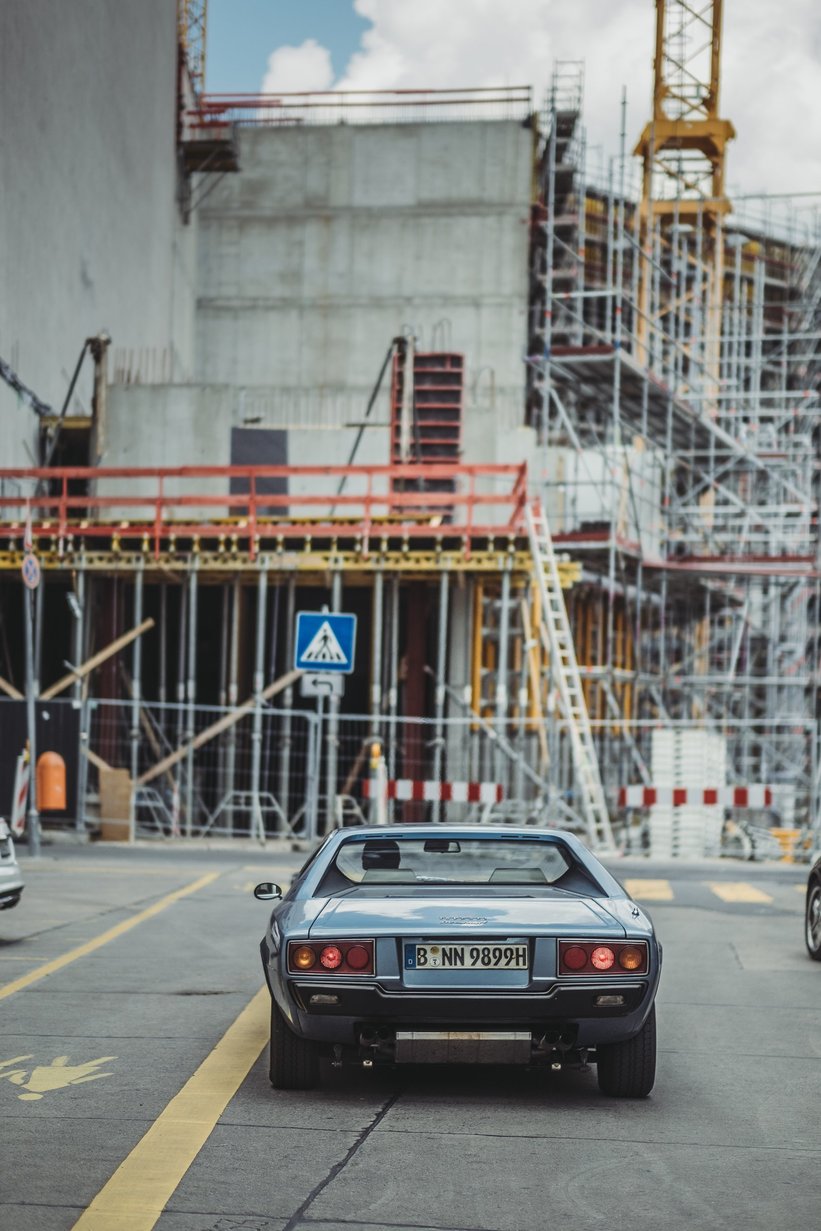
I console myself by thinking that it could have been worse. It’s a beautiful day and Marecki, clearly feeling a little bit guilty, makes up for the lack of locations by pointing out all the other places that have also since disappeared. Maybe that's the true lesson of the day: That there is simply no secret portal, no gateway left for time-warping back into the Berlin of 1995. In fact, the only time machine that can still take you back to these exciting years might be an old Lodown magazine.
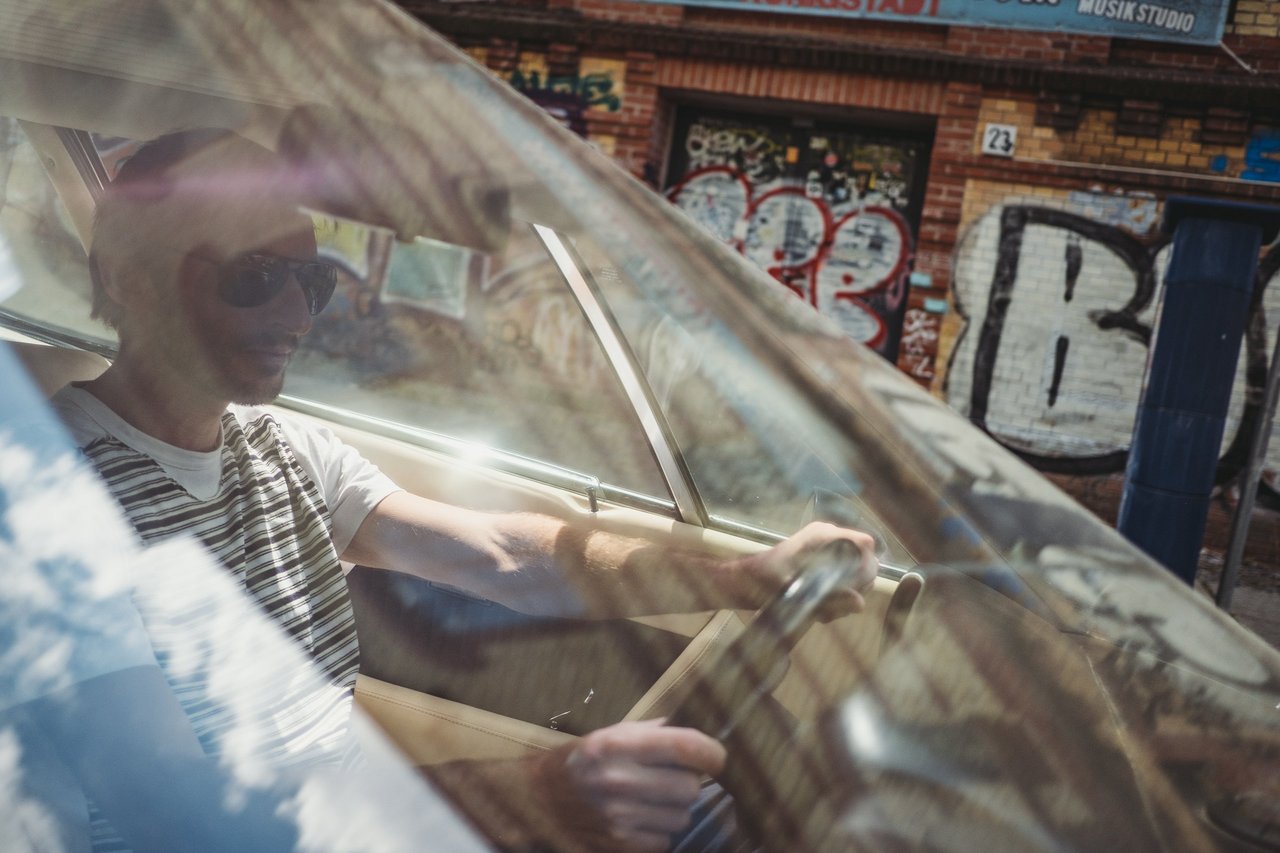
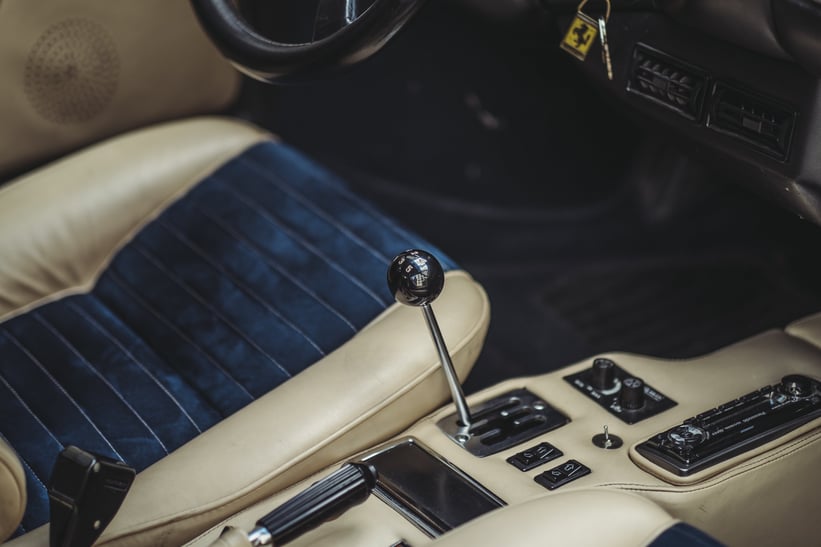
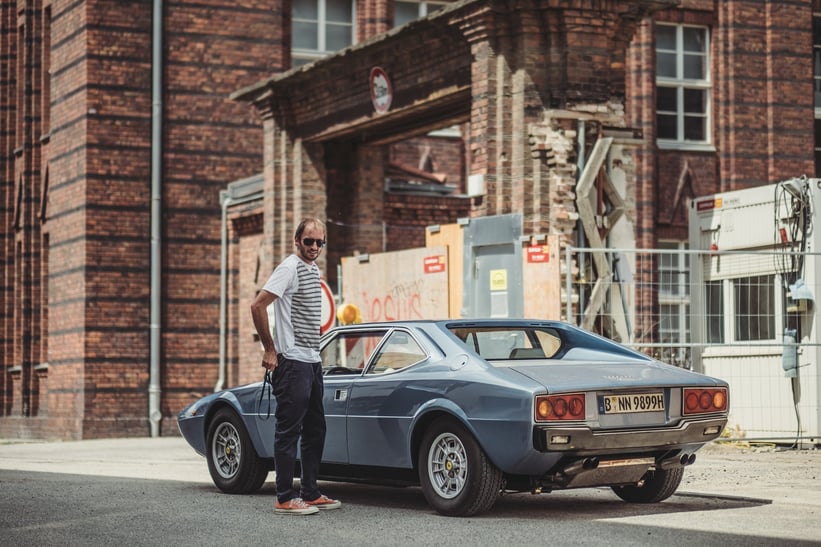
Suddenly the traffic clears, and a tunnel appears ahead of us. Marecki opens the taps of the Dino. Within five short seconds, I’ve forgotten about the day’s disappointments, which dissolve in a symphony of noise and speed. It’s a truism, but nothing in life is perfect. Everything evolves and changes, and that’s actually a good thing. I, for one, am much happier to be looking at this city from the passenger seat of a classic Ferrari than I would be from a skateboard. I’m not 14 years old anymore, and neither is Lodown.
Photography: Błażej Żuławski for Classic Driver © 2020
